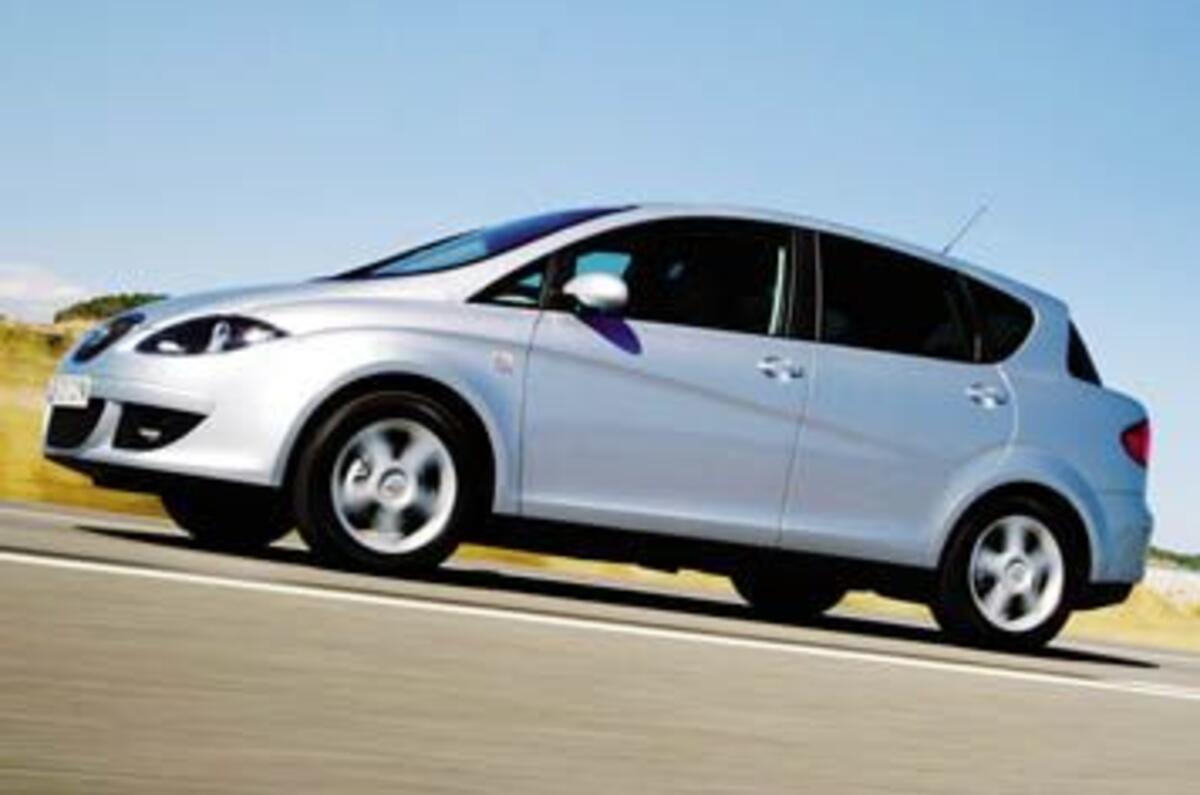I’ve never seen so many Toledos in one place before. Not the new, swoopily styled Toledo pictured here, but the old model: the one most people seem to have forgotten. These particular cars are black with yellow doors and a telephone number to call if you want to be taxied home from the local tapas bar. But opposite the main entrance to Barcelona airport lies another line-up of identical cars, this time under a large Seat flag, and these look anything but forgettable. This is the new Toledo, a car Seat sees as ‘redefining the saloon car’.
That grand claim fails on a technicality before we’ve even started, because the new Toledo is actually a hatchback, unlike the old one. That was just one of the problems facing the old car on the British market. Trying to sell a family saloon with no real image, one that was instantly forgettable visually and no better than average on the road, was always going to be challenging. Compare it with its successful Leon sibling and it’s an example of how linking the right product, the right brand and the right market makes the difference between winning or losing. So the Spanish firm has tried a new approach.
If you think the Toledo looks familiar you’re right. The Toledo is – put at its simplest – an Altea with a bigger boot. The cars are, in fact, identical from the front to the C-pillar (70 per cent of the components are shared between the two). Up until the C-pillar it’s the well-documented form that has become the new look of Seat cars with the Altea (born from motor show concept cars such as the Salsa). It features the characteristic styling line that curls underneath the headlamps, rises over the front wheels and plummets towards the rear wheelarches, and the oversized central grille with its prominent ‘S’ logo.
It’s after the C-pillar that the controversy begins. As one foreign journalist bravely asked in broken English at the press conference: ‘What is the reason for making a car with the back from a Renault Vel Satis?’ You’d have to say he had a point. The form is more rounded on the Seat, but the window shape and pronounced step before the boot have much in common with the French car. To these eyes it doesn’t quite gel with the rest of the Toledo; the new elements adds plenty to what was already a complicated shape.
The Altea lends its interior as well, so you sit high, cocooned within a dark cabin that offers an excellent driving position but poor forward visibility due to thick A-pillars. Although an effort has been made to give the dashboard a sporty slant, some of the materials used feel unnecessarily cheap – like the brittle plastic door pulls – almost as if they’ve been deliberately selected to distance the Seat from more upmarket cars in the VW Group. Our Sport-spec car had brilliantly supportive front seats, but the outer pair on the rear bench have pseudo-bucket sides that compromise the middle seat, rendering it little more than a high perch – questionable on what is a ‘saloon’ car aimed at families. The Toledo’s interior is roomy, practical and comfortable, and especially good for rear legroom, but it doesn’t bring anything new to the class.
Of course, the Toledo’s big feature is its boot. A commodious 500 litres, it also features a false floor with a separate storage compartment underneath.
VAG’s 2.0-litre TDi deploys its 236lb ft of torque with less boisterousness when mated with the slick DSG dual-clutch transmission tested here. The over-riding impression is of one long seam of acceleration, with each gearshift signalled more by the change in the engine’s pitch rather than any jolt or pause from the gearbox. Normally we accuse this engine of sounding rather gruff, and while it’s true that it still has all the aural charm of an industrial generator, Seat’s engineers have done a good job of insulating its worst manners from the cabin.




















Add your comment